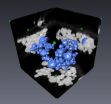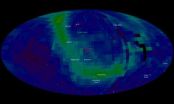(Press-News.org) DURHAM, N.C. -- A father's obesity is one factor that may influence his children's health and potentially raise their risk for diseases like cancer, according to new research from Duke Medicine.
The study, which appears Feb. 6 in the journal BMC Medicine, is the first in humans to show that paternal obesity may alter a genetic mechanism in the next generation, suggesting that a father's lifestyle factors may be transmitted to his children.
"Understanding the risks of the current Western lifestyle on future generations is important," said molecular biologist Adelheid Soubry, PhD, a postdoctoral associate at Duke Cancer Institute and the study's lead author. "The aim of this study was to determine potential associations between obesity in parents prior to conception and epigenetic profiles in offspring, particularly at certain gene regulatory regions."
Researchers looking at health outcomes in newborns have historically focused on pregnant women. Studies have shown that nutrition and environmental factors during pregnancy can affect children's health and may raise their risk of chronic diseases. However, little has been done to uncover how paternal factors can affect children.
The Duke research team sought to determine associations between obesity in parents and changes in DNA methylation at the insulin-like growth factor 2 (IGF2) gene among offspring. DNA methylation regulates the activity of certain genes, which can reflect a higher risk for some diseases. Decreased DNA methylation at the IGF2 gene has been associated with an increased risk of developing certain cancers, including colorectal and ovarian cancers.
"Our genes are able to adapt to our environment. However, we adjust in a way that may be problematic later," said Cathrine Hoyo, PhD, MPH, a cancer epidemiologist at Duke Medicine and the study's senior author. "It is not a change in the sequence of the DNA itself, but how genes are expressed. Some genes may get 'shut off' as a result of environmental trauma."
To gather data on newborn health outcomes, the researchers followed families enrolled in the Newborn Epigenetics Study (NEST), a research program developed by Hoyo and funded by the National Institutes of Health to test the influence of environmental exposures on genetic profiles in newborns.
Researchers gathered information about the mothers and fathers using questionnaires and medical records. They then examined DNA from the umbilical cords of 79 newborns to determine potential associations between the offspring's DNA methylation patterns and parental obesity before conception.
DNA methylation at the IGF2 gene in the offspring of obese fathers was significantly lower than in the children of fathers who were not obese. This suggests that paternal obesity may be associated with an increased risk of children developing certain cancers.
The researchers noted that the changes in DNA methylation could have been a result of something related to obesity, such as eating a certain diet or having diabetes, that was not measured in this study.
Additional research is underway to see if these changes in DNA methylation at the IGF2 gene remain as the children grow older. Future studies may also determine if certain interventions – similar to women taking folic acid while pregnant to prevent birth defects – can be used prior to or after conception to prevent irregular methylation profiles.
"This study is an important start in looking at the effects of environmental exposure on children, not only through the mother but also through the father," said Soubry. "Although we cannot define at this point which obesity-related factor may cause an epigenetic effect, we measured in this study a significant association between paternal obesity and aberrant methylation profiles in the offspring."
###
In addition to Soubry and Hoyo, study authors include Joellen M. Schildkraut, Amy Murtha, Frances Wang, Zhiqing Huang, Autumn Bernal, Joanne Kurtzberg, Randy L. Jirtle, and Susan K. Murphy.
The study was supported by National Institutes of Health (R21ES014947, R01ES016772, R01DK085173, R25CA126938-01A2), the American Cancer Society (ACS-IRG 83-006), Fulbright, and the Fred and Alice Stanback Foundation.
Obesity in dads may be associated with offspring's increased risk of disease
2013-02-06
ELSE PRESS RELEASES FROM THIS DATE:
Purification on the cheap
2013-02-06
CAMBRIDGE, MA -- Increased natural gas production is seen as a crucial step away from the greenhouse gas emissions of coal plants and toward U.S. energy independence. But natural gas wells have problems: Large volumes of deep water, often heavily laden with salts and minerals, flow out along with the gas. That so-called "produced water" must be disposed of, or cleaned.
Now, a process developed by engineers at MIT could solve the problem and produce clean water at relatively low cost. After further development, the process could also lead to inexpensive, efficient desalination ...
Are deaf and hard-of-hearing physicians getting the support they need?
2013-02-06
(SACRAMENTO, Calif.) — Deaf and hard of hearing (DHoH) people must overcome significant professional barriers, particularly in health care professions. A number of accommodations are available for hearing-impaired physicians, such as electronic stethoscopes and closed-captioning technologies, but are these approaches making a difference?
A team of researchers from the University of California, Davis, the University of Texas Health Science Center at San Antonio and the University of Michigan surveyed DHoH physicians and medical students to determine whether these and ...
New waterjets could propel LCS to greater speeds
2013-02-06
ARLINGTON, Va. —The Navy's fifth Littoral Combat Ship (LCS), Milwaukee, will be the first to benefit from new high-power density waterjets aimed at staving off rudder and propeller damage experienced on high-speed ships.
The product of an Office of Naval Research (ONR) Future Naval Capabilities (FNC) program, the waterjets arrived last month at the Marinette Marine shipyard in Wisconsin, where Milwaukee (LCS 5) is under construction.
"We believe these waterjets are the future," said Dr. Ki-Han Kim, program manager in ONR's Ship Systems and Engineering Research Division. ...
Study finds potential to match tumors with known cancer drugs
2013-02-06
ANN ARBOR, Mich. — When it comes to gene sequencing and personalized medicine for cancer, spotting an aberrant kinase is a home run. The proteins are relatively easy to target with drugs and plenty of kinase inhibitors already exist.
Now in a new study, University of Michigan Comprehensive Cancer Center researchers assess the complete landscape of a cancer's "kinome" expression and determine which kinases are acting up in a particular tumor. They go on to show that those particular kinases can be targeted with drugs – potentially combining multiple drugs to target multiple ...
New modeling approach transforms imaging technologies
2013-02-06
WEST LAFAYETTE, Ind. – Researchers are improving the performance of technologies ranging from medical CT scanners to digital cameras using a system of models to extract specific information from huge collections of data and then reconstructing images like a jigsaw puzzle.
The new approach is called model-based iterative reconstruction, or MBIR.
"It's more-or-less how humans solve problems by trial and error, assessing probability and discarding extraneous information," said Charles Bouman, Purdue University's Michael and Katherine Birck Professor of Electrical and Computer ...
Obesity treatment breakthrough described in EurekAlert!'s No. 1 most-visited news release in 2012
2013-02-06
EurekAlert!'s most-viewed news release from 2012 focused on a breakthrough in the treatment of obesity and related diseases using a combination of hormones, tested in mice, that resulted in weight loss and lowered blood sugar without negative side effects.
The theme of obesity was prominent in three other most-viewed news releases on EurekAlert! during 2012.. Other topics were mental health, neuroscience, marine conservation, human behavioral science, and progress toward a male contraceptive pill.
EurekAlert! is the global science news service operated by the American ...
Scientists debate CDC recommendations during meningitis outbreak
2013-02-06
A pair of commentaries to appear in an upcoming issue of the journal Antimicrobial Agents and Chemotherapy highlight a debate within the public health community surrounding Centers for Disease Control and Prevention (CDC) recommendations for treatment of exposed individuals during last year's fungal meningitis outbreak. Manuscripts of the commentaries were published ahead of print today on the journal's webpage.
"I will try to offer sufficient documentation to show there are alternative approaches worthy of consideration," writes David A Stevens of Stanford University ...
Does probability come from quantum physics?
2013-02-06
Ever since Austrian scientist Erwin Schrodinger put his unfortunate cat in a box, his fellow physicists have been using something called quantum theory to explain and understand the nature of waves and particles.
But a new paper by physics professor Andreas Albrecht and graduate student Dan Phillips at the University of California, Davis, makes the case that these quantum fluctuations actually are responsible for the probability of all actions, with far-reaching implications for theories of the universe.
Quantum theory is a branch of theoretical physics that strives ...
Plants cut the mustard for basic discoveries in metabolism
2013-02-06
LA JOLLA, CA----You might think you have nothing in common with mustard except hotdogs. Yet based on research in a plant from the mustard family, Salk scientists have discovered a possible explanation for how organisms, including humans, directly regulate chemical reactions that quickly adjust the growth of organs. These findings overturn conventional views of how different body parts coordinate their growth, shedding light on the development of more productive plants and new therapies for metabolic diseases.
Metabolism refers to all the chemical reactions in the body ...
A major step forward in explaining the ribbon in space discovered by NASA's IBEX mission
2013-02-06
The vast edges of our solar system – the boundary at the edge of our heliosphere where material streaming out from the sun interacts with the galactic material – is essentially invisible. It emits no light and no conventional telescope can see it. However, particles from inside the solar system bounce off this boundary and neutral atoms from that collision stream inward. Those particles can be observed by instruments on NASA's Interstellar Boundary Explorer (IBEX). Since those atoms act as fingerprints for the boundary from which they came, IBEX can map that boundary in ...


